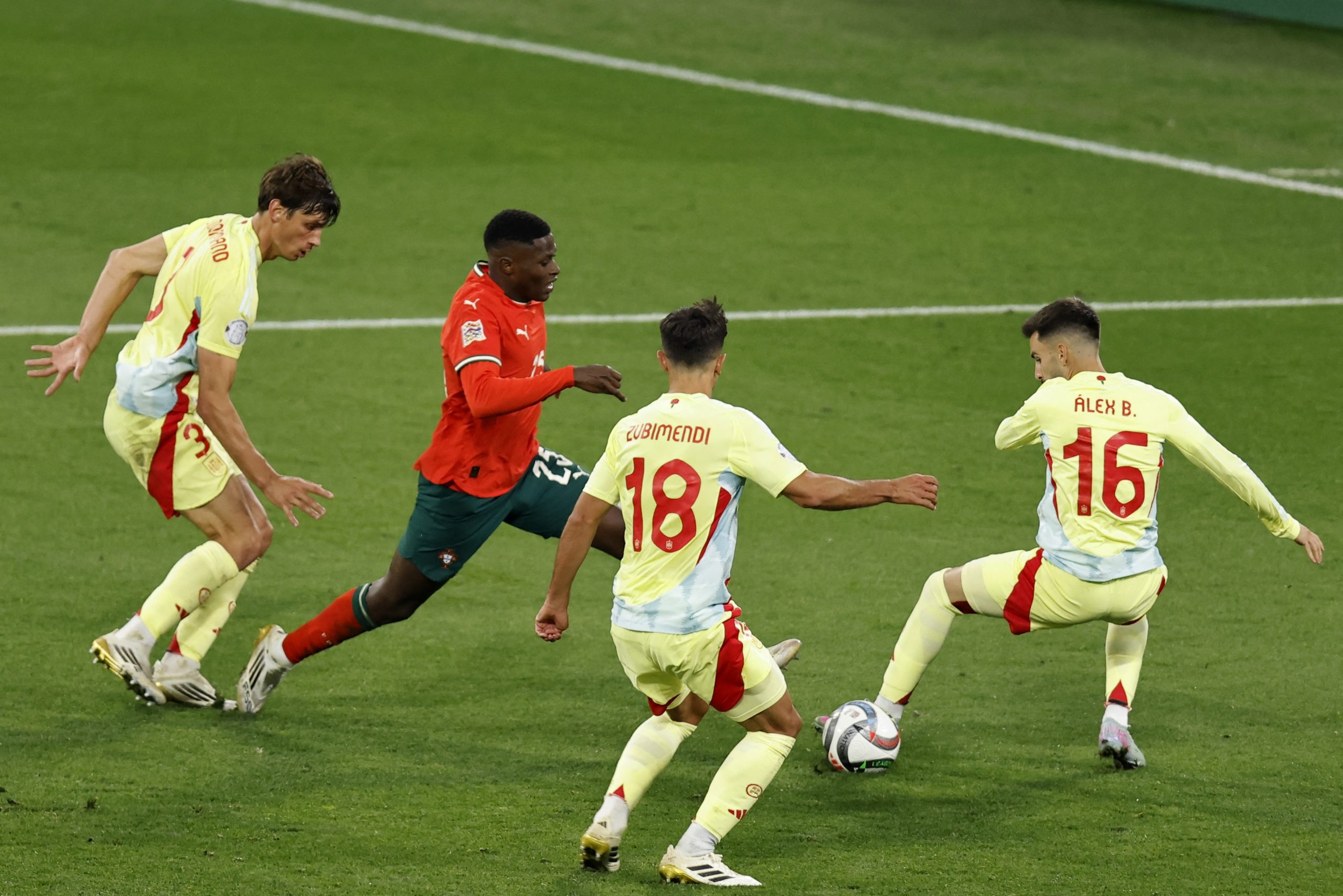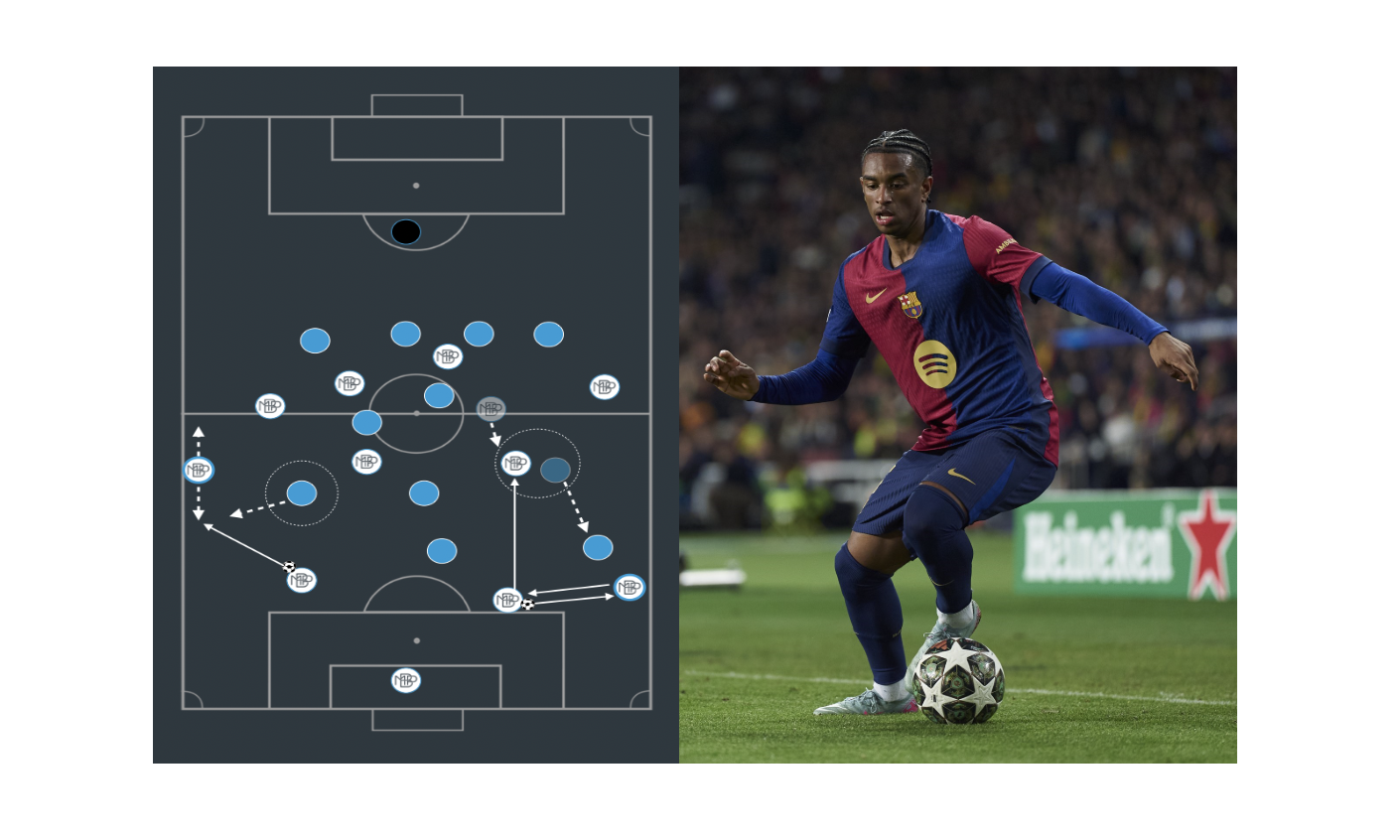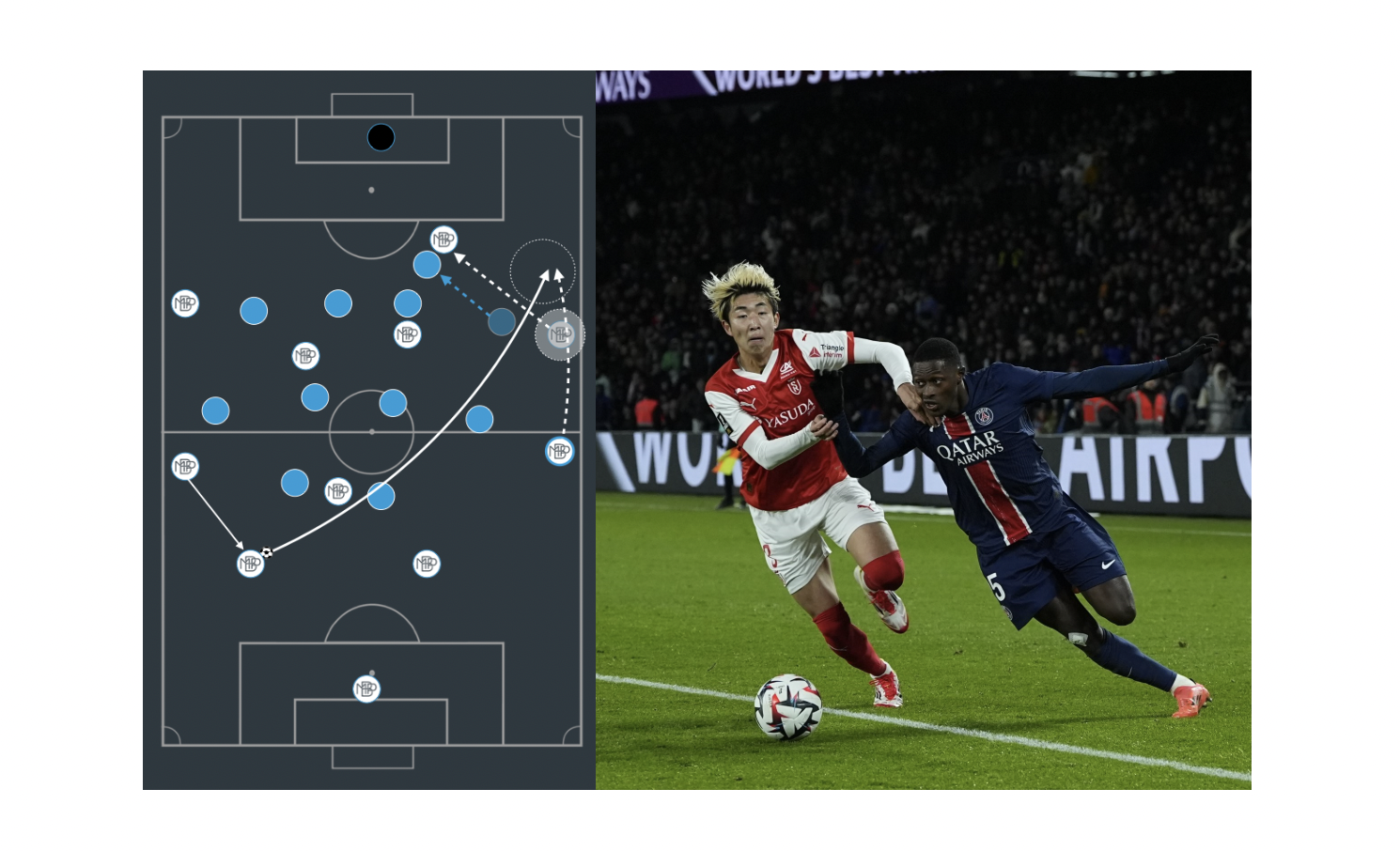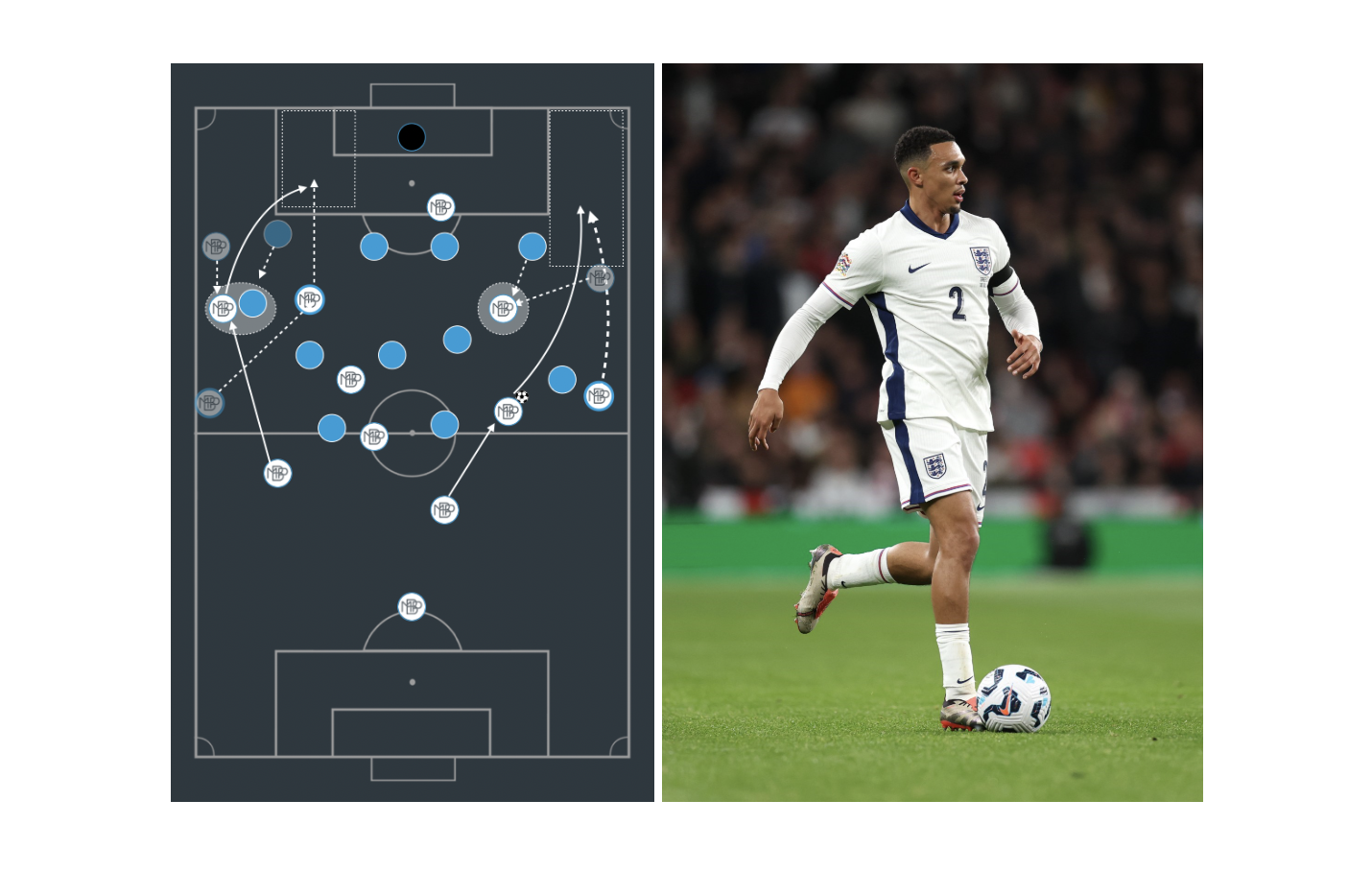MBP Coaches’ School believes that any attacking fullback, given their playing characteristics, must master three key individual fundamentals in order to have a positive impact on their game and that of their team.
Depending on the Game Model that each coach wants to represent, they will require one player profile or another. In the case of full backs, as we saw in the second blog of April, they can be attacking, defensive or a playmaker, i.e. they can also play in the central channel and participate in the creation of the team’s play.
If we look at some of the best full backs in football today, we will see that many of them master three fundamentals that we consider key to their game and profile. These are described below:
Fundamental 1: Offering Support When Building Up From The Back Providing Width And Depth
This is particularly important at the start of the dynamic build-up or progression, where support is constantly needed to circulate the ball safely.
In this case, the full back must show width at the start of their team’s build-up and also depth in the defensive line, looking for diagonal passing lines that allow progress in the play, by positioning themselves at the height of the player furthest back in the midfield line (normally the opposition winger).
When the team has a circulation towards a wide channel and they manage to switch the play, with the centre back or the on-ball teammate having space to progress, it is recommended that the full back gains depth to be able to overcome their direct defender with their position and be key in the team’s build-up.
In turn, the depth of the full back will vary depending on how the opposition team presses. It may be more optimal to push higher to break the line of the direct opponent, or, on the other hand, to move deeper to attract opponents and create space behind them, whilst also providing support for continuity to circulate the ball.
Another important aspect is that the full back will have to manage their height and position well, seeing which player close to them can jump to press them, having to drop lower in case they cannot receive in that position.
Image 1. Graphic representation of the fundamental of Offering Support When Building Up From The Back Providing Width And Depth. Image of Alejandro Balde, in a match with the Spanish national team. Source: MBP Coaches’ School
Fundamental 2: Incorporation Into The Finishing Zone On Switches Of Play
This occurs during the moment of progression of the play or attacking in the 3/4 zone, in a switch of play.
For the correct application of this fundamental, it is important for the player to take into account two situations:
- The winger receiving the ball setting up a 2v1 situation with the full back.
- The winger finding themselves as the 2nd forward and the full back taking advantage of the width in the wide channel.
To do this, they must join the attack in actions of switches of the play with enough space to be able to help the winger in the progression towards goal (2v1) or where the winger has left the channel free by participating more in central zones.
Usually, the ball must come from the opposite side to have more time and space. In this case, the movement of the winger greatly conditions the space available for the full back to exploit.
Image 2. Graphical representation of the fundamental for incorporating inot the finishing zone in switches of play, and Nuno Mendes, in a match with Portugal. Source: MBP Coaches’ School
Fundamental 3: Incorporation Into The Finishing Zone From The Creation Of Space Inside The Same Wing
Although it is very similar in name to the previous fundamental, it does not appear in the same playing situation. In this case, it occurs when a space is created within our channel by the movement of the winger, whether it is the winger’s movement inside or outside, rather than in the opposite channel. Therefore, it will be applied by the full back when the ball is in their own vertical channel.
This movement of the winger will be very important, as it will serve to draw the opposition full back inside or higher. With this, the attacking full back must join the attack in actions where the movement of the winger leaves the wide channel free, making the forward run when in the formation of the attacking diamond, the winger makes a supporting movement that drags the full back high or towards the centre.
Image 3. Graphical representation of the fundamental for Incorporation Into The Finishing Zone From The Creation Of Space Inside The Same Wing, and Alexander-Arnold, English full-back, arriving in the finishing zone. Source: MBP Coaches’ School
In summary, it is clear that the attacking full backs can contribute a lot to the team, both in attack and defence, but it will be key that they know how to identify the situations in which they must incorporate into the attack (in the opposition half) and understand their position in the moment of build-up and progression to help the team progress collectively.
Do you want to learn more about the Individual Fundamentals By Position?
The ‘Specialist in Individual Fundamentals by Position’ course will allow you to study in depth more than 90 individual fundamentals by player position. All these fundamentals are the result of an exhaustive study of each and every one of the most common and relevant situations in which each player finds themselves in during a match depending on their position on the pitch. Once these situations in the play have been identified, we study which are the optimal responses that give the player the best chance of success.










